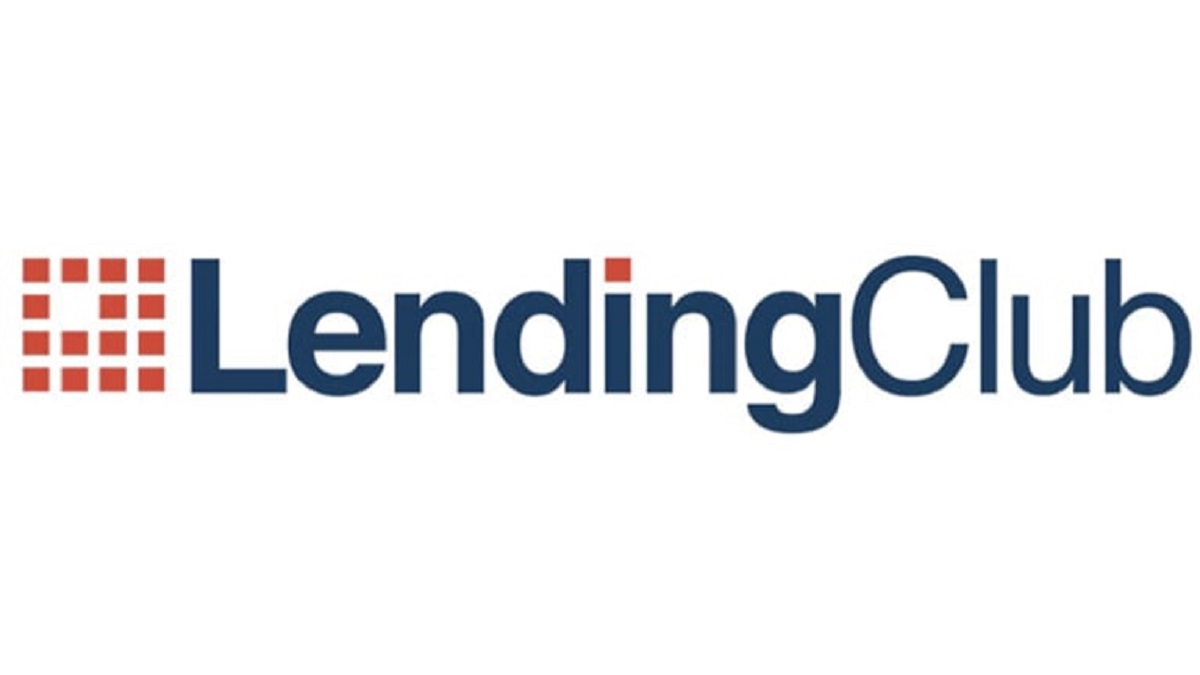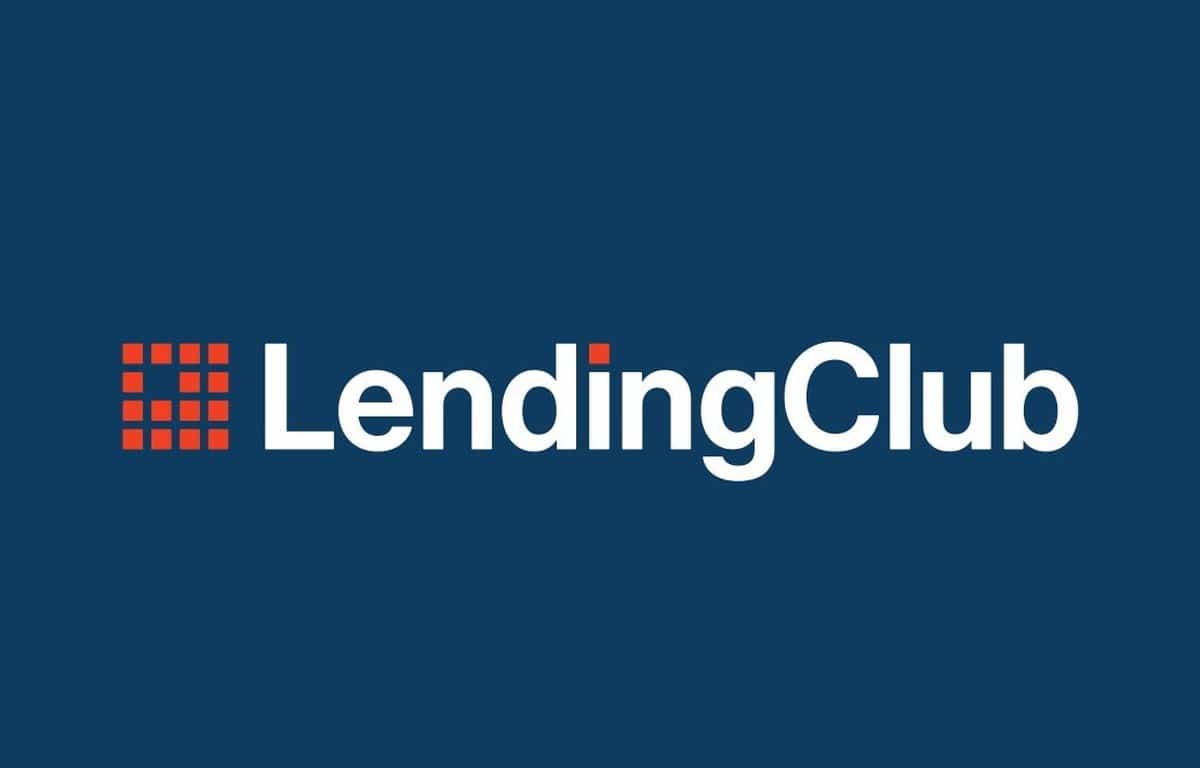Introduction
Lending is a fundamental concept that plays a significant role in our financial system. Whether it’s individuals, businesses, or even governments, the ability to lend and borrow money is essential for economic growth and development. At its core, lending is the act of providing funds to someone with the expectation that it will be repaid in the future, typically with interest. This practice helps bridge the gap between those who have excess money and those who need it for various purposes.
The lending process has evolved over time, offering borrowers a wide range of options when it comes to securing funding. From traditional banks and credit unions to online peer-to-peer platforms, the lending landscape has become more diverse and accessible. Additionally, lending serves as a crucial tool for individuals and businesses to achieve their financial goals, whether it’s buying a home, starting a small business, or pursuing higher education.
In this article, we will delve into the intricacies of lending and explore the various aspects of this financial practice. We will examine the lender-borrower relationship, different types of lending, the lending process itself, and the risks and benefits associated with engaging in lending. By understanding the fundamentals of lending, you can make informed decisions about borrowing or potentially becoming a lender yourself.
Throughout this article, we will also highlight key terms and industry jargon to ensure that you are equipped with the necessary knowledge to navigate the lending landscape. So, whether you’re considering taking out a loan or simply interested in learning more about the inner workings of lending, this article will serve as a valuable resource to guide you through the intricacies of this financial practice.
What is lending?
Lending is the process of providing financial resources to individuals, businesses, or governments with the expectation of repayment in the future. It involves granting a loan or credit to borrowers, who then utilize the funds for various purposes. Lending enables individuals and organizations to access capital that they may not have readily available, allowing them to meet their financial needs or pursue opportunities for growth.
When someone lends money, they become the lender or creditor, while the recipient of the funds becomes the borrower or debtor. The terms of the lending arrangement are typically outlined in a loan agreement, which details the amount borrowed, the repayment period, interest rates, and any other conditions or requirements.
Lending can take various forms, ranging from personal loans to commercial mortgages and government bonds. Personal loans are typically used for personal expenses like home improvements, medical bills, or debt consolidation. On the other hand, businesses often rely on commercial lending to finance operations, invest in equipment, or expand their operations.
Government entities also engage in lending by issuing bonds to finance public projects, such as infrastructure development or social initiatives. Lending to governments is often considered less risky as they have the ability to generate revenue through taxes to repay their debts.
Overall, lending serves as a critical component of our financial system, facilitating economic growth and enabling individuals and organizations to achieve their goals. It allows lenders to earn interest on their capital while providing borrowers with the necessary funds to pursue opportunities or address financial challenges.
In the next section, we will explore the motivations behind lending and why individuals and institutions choose to lend their money. Understanding these factors can shed light on the dynamics of the lender-borrower relationship and the benefits it brings to both parties involved.
Why do people lend money?
People have various reasons for choosing to lend their money instead of keeping it idle or simply spending it. The act of lending provides individuals and institutions with opportunities for financial growth and allows them to contribute to the economic growth of others. Here are some key motivations behind lending:
1. Interest and Profit: One of the primary reasons people lend money is to earn interest or generate profit. Lenders receive interest payments from borrowers as compensation for the use of their funds. This interest income can provide a steady stream of earnings, making lending an attractive investment option for individuals and financial institutions alike.
2. Diversification of Investments: Lending allows individuals to diversify their investment portfolio beyond traditional options like stocks and bonds. By lending money, they can spread their risk across different assets classes and potentially enhance their overall returns.
3. Helping Others: Lending provides an opportunity to help individuals and businesses who need financial resources to achieve their goals. Whether it’s offering a personal loan to a friend or providing capital to a small business, lending can be a way to support others in their endeavors.
4. Building Relationships: Lending can foster relationships and create mutually beneficial connections. For example, lending within a community or to local businesses can help strengthen the local economy and develop trust among community members.
5. Alleviating Financial Constraints: Lending allows borrowers to overcome financial constraints and fulfill their needs or aspirations. It can provide individuals with the means to make significant purchases like buying a home, starting a business, or pursuing higher education.
6. Earning a Higher Return: In some cases, lenders may seek higher returns by providing funds to borrowers who may have limited access to traditional lending sources. This often occurs in peer-to-peer lending platforms, where lenders have the potential to earn higher returns than from traditional savings accounts or fixed-income investments.
7. Contributing to the Economy: Lending plays a crucial role in the overall economy by stimulating economic activity. When funds are lent to borrowers, they can invest in new ventures, create jobs, and generate income, ultimately contributing to economic growth.
By understanding the motivations behind lending, we can appreciate its significance in our financial system. The lender-borrower relationship is mutually beneficial, with lenders earning interest and borrowers gaining access to much-needed funds. In the following sections, we will explore different types of lending and the processes individuals and institutions go through when engaging in lending activities.
The lender-borrower relationship
The lender-borrower relationship is at the core of the lending process. It represents the dynamic interaction between individuals or institutions who provide funds (lenders) and those who receive and utilize those funds (borrowers). Understanding this relationship is crucial for both lenders and borrowers to ensure a mutually beneficial experience. Here are some key aspects of the lender-borrower relationship:
1. Trust and Confidence: Trust is essential in the lender-borrower relationship. Lenders need to have confidence that borrowers will repay the borrowed funds as agreed. Borrowers, on the other hand, trust that lenders will provide fair terms, interest rates, and reliable customer service.
2. Financial Assessment: Lenders typically assess the creditworthiness of potential borrowers before approving a loan. They consider factors such as credit history, income stability, debt-to-income ratio, and collateral (if applicable). This assessment helps lenders determine the level of risk associated with lending to a particular borrower.
3. Terms and Conditions: Once lenders approve a loan, they establish terms and conditions that govern the lending arrangement. This includes the loan amount, interest rate, repayment period, and any additional fees or charges. Clear communication of these terms is crucial to avoid misunderstandings and ensure both parties are aligned.
4. Communication and Support: Effective communication between lenders and borrowers is essential throughout the lending process. Lenders should provide borrowers with comprehensive information, answer their questions, and provide support when needed. Clear communication helps borrowers understand their obligations and make informed decisions.
5. Accountability and Repayment: Borrowers have the responsibility to repay the borrowed funds according to the agreed-upon terms. This includes making regular payments, meeting deadlines, and fulfilling any other obligations outlined in the loan agreement. Timely repayment helps maintain a positive lender-borrower relationship and can enhance the borrower’s creditworthiness.
6. Flexibility and Adjustments: In some cases, borrowers may face challenges in meeting their repayment obligations due to unforeseen circumstances. In these situations, open communication with lenders can help explore options for temporary adjustments or alternative repayment plans. Lenders, too, may offer flexibility to accommodate borrowers facing difficulties.
7. Long-Term Relationship: The lender-borrower relationship can extend beyond a single loan transaction. Lenders may offer additional lending opportunities to borrowers who demonstrate a positive repayment history, building a long-term relationship based on trust and mutual benefit.
Maintaining a healthy and productive lender-borrower relationship is crucial for both parties. Lenders benefit from reliable borrowers who repay their loans, while borrowers benefit from access to funds and potential assistance in achieving their financial goals. In the next sections, we will explore different types of lending and the lending process in more detail.
Types of lending
Lending comes in various forms to accommodate the diverse needs of borrowers and to cater to different financial situations. Understanding the different types of lending can help individuals and businesses choose the most suitable option for their specific requirements. Here are some common types of lending:
1. Personal Loans: Personal loans are a type of unsecured lending where individuals borrow money for personal expenses such as debt consolidation, home renovations, or medical bills. These loans typically have fixed interest rates and repayment periods.
2. Business Loans: Business loans are designed to meet the financing needs of businesses. They can be used for various purposes, including starting a new business, expanding operations, purchasing equipment, or managing cash flow. Business loans may be secured or unsecured, and their terms and conditions can vary based on the borrower’s creditworthiness and business profile.
3. Mortgages: Mortgages are loans secured by real estate, typically used for purchasing or refinancing a home. The property serves as collateral, providing lenders with a level of security. Mortgage loans often have long repayment periods and may offer fixed or variable interest rates.
4. Auto Loans: Auto loans are specifically designed for financing the purchase of vehicles. The vehicle itself serves as collateral, and borrowers repay the loan over a specified period. Auto loans can be obtained from both traditional banks and specialized lenders.
5. Student Loans: Student loans are used to finance higher education expenses, including tuition, books, and living costs. These loans can be obtained from government entities or private lenders and often offer favorable repayment terms, such as deferred payments or income-driven repayment options.
6. Payday Loans: Payday loans are short-term loans intended to provide immediate cash flow until the borrower’s next paycheck. These loans often come with high interest rates and fees, making them a more expensive borrowing option.
7. Debt Consolidation Loans: Debt consolidation loans are used to combine multiple debts into a single loan, simplifying repayment and potentially lowering interest rates. This type of loan can help borrowers manage their debt more effectively.
8. Secured Loans: Secured loans are backed by collateral, such as real estate or valuable assets. In the event of default, the lender has the right to claim the collateral to recover their funds. Secured loans typically offer lower interest rates and higher borrowing limits compared to unsecured loans.
9. Unsecured Loans: Unsecured loans do not require collateral and are solely based on the borrower’s creditworthiness. These loans may have higher interest rates and stricter approval criteria due to the higher level of risk for lenders.
10. Peer-to-Peer Lending: Peer-to-peer lending platforms connect individual lenders with borrowers, eliminating the need for traditional financial institutions. These online platforms facilitate lending between individuals and often offer competitive interest rates and flexible terms.
Understanding the different types of lending can help borrowers navigate the lending landscape and choose the most appropriate option for their financial needs. Each type of lending comes with its own set of requirements, terms, and conditions, so it’s essential to evaluate these factors before making a borrowing decision.
Traditional lending institutions
Traditional lending institutions play a pivotal role in the lending landscape as trusted and established entities that provide financial services to individuals and businesses. These institutions, including banks and credit unions, have a long history of serving as primary sources of funding for borrowers. Here are some key characteristics and features of traditional lending institutions:
1. Banks: Banks are financial institutions that offer a wide range of lending products and services. They accept deposits from individuals and businesses and use those funds to provide loans to borrowers. Banks offer various types of lending, including personal loans, business loans, mortgages, and lines of credit. They operate with established banking licenses and are subject to regulatory oversight.
2. Credit Unions: Credit unions are not-for-profit financial institutions that are owned and operated by their members. Credit unions provide lending services and other financial products to their members, who often have a common bond, such as being employees of the same company or members of a specific organization. Credit unions typically offer competitive interest rates and personalized customer service.
3. Branch Networks: Traditional lending institutions often have physical branches where borrowers can visit and interact with loan officers or representatives. These branches provide a face-to-face experience and allow borrowers to discuss their borrowing needs, receive advice, and complete loan applications in person.
4. Regulation and Compliance: Traditional lending institutions are subject to extensive regulation and compliance requirements. They must adhere to local, national, and international banking regulations to ensure the safety and soundness of the financial system. This oversight helps protect both lenders and borrowers from fraudulent practices and unethical behavior.
5. Deep Expertise: Traditional lending institutions have years of experience and expertise in assessing creditworthiness and managing lending portfolios. Loan officers and credit analysts evaluate borrowers’ financial profiles, analyze risk factors, and make informed lending decisions based on established criteria.
6. Deposit Requirement: Traditional lending institutions often require borrowers to have a deposit relationship with them. This means that borrowers may need to open a checking or savings account with the institution to access lending services. In some cases, having a deposit relationship can result in more favorable loan terms or lower interest rates.
7. Integrated Financial Services: Along with lending, traditional institutions offer an array of financial services, including savings accounts, investment opportunities, insurance products, and wealth management services. This integration allows borrowers to consolidate their financial relationships and access multiple services in one place.
8. Physical Presence: Traditional lending institutions have a physical presence in the form of branch locations. This presence offers convenience for borrowers who prefer face-to-face interactions or need assistance with their financial needs.
While traditional lending institutions remain a popular choice for many borrowers, the rise of technology and digital platforms has introduced new alternatives to the lending landscape. In the next section, we will explore the emergence of peer-to-peer lending as a viable alternative to traditional lending institutions.
Peer-to-peer lending
Peer-to-peer lending, also known as P2P lending or marketplace lending, has emerged as a popular alternative to traditional lending institutions in recent years. P2P lending platforms leverage technology to connect individual lenders with borrowers in a direct lending model. Here are some key aspects of peer-to-peer lending:
1. Direct Connection: P2P lending platforms facilitate direct lending between individuals, bypassing the need for traditional financial intermediaries like banks. Borrowers can request loans, and individual lenders can choose to fund all or a portion of those loans based on their risk appetite and investment preferences.
2. Online Platforms: P2P lending operates primarily through online platforms, where borrowers can create loan listings detailing their borrowing needs and lenders can review and select loans to fund. These platforms provide a streamlined and efficient process, reducing the paperwork and time involved in traditional lending.
3. Access to Funding: P2P lending offers borrowers greater access to funds, especially for those who may have difficulty obtaining loans from traditional lenders due to limited credit history or unconventional income sources. P2P platforms often have a more inclusive lending model.
4. Competitive Interest Rates: Since P2P lending platforms have lower overhead costs compared to traditional institutions, they can offer competitive interest rates for borrowers. Additionally, some platforms allow borrowers with strong credit profiles to secure loans at lower rates compared to traditional lenders.
5. Diverse Borrower Profiles: P2P lending platforms cater to a wide range of borrowers, including individuals, small businesses, and even borrowers with less than perfect credit histories. These platforms often utilize advanced algorithms and data analytics to assess borrowers’ creditworthiness and assign risk ratings.
6. Investment Opportunities: P2P lending presents an investment opportunity for individual lenders. By lending their money directly to borrowers, lenders can earn interest income on their investment. P2P lending allows lenders to diversify their portfolios beyond traditional investment options like stocks and bonds.
7. Transparency and Accessibility: P2P lending platforms provide transparency by sharing relevant information about borrowers and their loan requests. Lenders can review borrower profiles, financial information, and loan purposes before deciding to fund a loan. This transparency allows lenders to make informed investment decisions.
8. Flexibility and Customization: P2P lending platforms offer flexibility in terms of loan amounts, repayment terms, and interest rates. Borrowers can request loans tailored to their specific needs, while lenders can choose their investment amounts and diversify their lending portfolios.
9. Regulation and Investor Protection: P2P lending platforms are subject to regulatory oversight to protect both borrowers and lenders. Regulations vary by jurisdiction, and reputable platforms adhere to compliance measures to ensure a safe and fair lending environment.
Peer-to-peer lending has revolutionized the lending landscape by providing an alternative financing option that is efficient, accessible, and often more inclusive. While P2P lending may not suit every borrower or lender, its growth in popularity demonstrates its potential to reshape the way individuals and businesses obtain and provide funding.
The lending process
The lending process involves several stages from the initial loan application to the disbursement of funds. Understanding the lending process is essential for borrowers to navigate the requirements and for lenders to ensure a smooth and efficient lending experience. Here are the key steps involved in the lending process:
1. Loan Application: The lending process begins with the borrower submitting a loan application. This application typically includes personal or business information, financial documents, and details about the purpose of the loan. The application may be submitted online, through a loan officer, or on a P2P lending platform.
2. Document Verification: Lenders carefully review the loan application and verify the information provided by the borrower. This may involve checking credit reports, income documents, bank statements, and any other relevant documentation. Lenders also assess the borrower’s creditworthiness to determine the risk associated with granting the loan.
3. Loan Approval: Based on the evaluation of the loan application and supporting documents, the lender decides whether to approve or deny the loan. If approved, the lender specifies the loan amount, interest rate, repayment period, and any other terms and conditions. In some cases, lenders may request additional documentation or collateral for certain types of loans.
4. Loan Agreement: Once the loan is approved, both the lender and borrower sign a loan agreement. This agreement outlines the terms and conditions of the loan, including repayment schedule, interest rate, fees, and consequences for default. It is essential for borrowers to carefully read and understand the terms before signing the agreement.
5. Loan Disbursement: After the loan agreement is signed, the lender disburses the funds to the borrower. The disbursement can be in the form of a direct deposit, check, or transfer to the borrower’s account. The timing of disbursement depends on the lending institution and the type of loan.
6. Loan Repayment: Borrowers are required to make regular payments according to the agreed-upon repayment schedule. This typically includes a combination of principal and interest, ensuring the loan is paid off by the end of the designated repayment period. It is important for borrowers to make timely payments to maintain a positive credit history and avoid penalties.
7. Account Management: Throughout the loan term, borrowers and lenders may need to communicate and address any questions or concerns related to the loan. Lenders may have online account management platforms or customer service channels to assist borrowers with payment inquiries or other loan-related matters.
8. Loan Closure: Once the final payment is made, the loan is considered fully repaid, and the lending process comes to a close. Lenders often provide borrowers with a confirmation or clearance letter indicating that the loan has been successfully paid off.
Understanding the lending process helps borrowers prepare and meet the requirements of lenders, ensuring a smooth application and approval process. For lenders, following a structured lending process helps maintain consistency, manage risk, and ensure compliance with regulatory guidelines.
Assessing Creditworthiness
Assessing the creditworthiness of borrowers is a crucial step in the lending process for traditional financial institutions and peer-to-peer lending platforms alike. Creditworthiness refers to an individual’s or business’s ability to repay a loan based on their financial health, past borrowing behavior, and other relevant factors. Evaluating creditworthiness helps lenders determine the level of risk associated with lending to a particular borrower. Here are some key factors considered when assessing creditworthiness:
1. Credit History: Lenders review a borrower’s credit history, which includes information about their past borrowing and repayment patterns. This information is obtained from credit bureaus and provides insights into the borrower’s ability to manage and repay debt. A positive credit history, demonstrated by timely payments and low credit utilization, enhances creditworthiness.
2. Income and Employment Stability: Lenders assess the borrower’s income and employment stability to gauge their ability to generate a steady income stream. Stable employment and a regular income source increase the likelihood of timely loan repayments. Lenders may request income documentation such as pay stubs, tax returns, or bank statements.
3. Debt-to-Income Ratio (DTI): The DTI ratio compares a borrower’s monthly debt obligations with their monthly income. Lenders use this ratio to assess the borrower’s ability to take on additional debt. A lower DTI ratio indicates a lower repayment burden and enhances creditworthiness.
4. Collateral: In cases of secured loans, lenders assess the value and quality of the collateral offered by the borrower. Collateral provides a form of security for the lender, reducing the risk of loan default. Evaluating the collateral helps lenders determine the loan-to-value ratio and mitigate potential losses.
5. Payment History: Lenders consider an individual’s or business’s track record of making timely payments on existing loans and credit accounts. A history of missed or late payments may indicate a higher risk of loan default and can negatively impact creditworthiness.
6. Credit Score: Credit scores, generated by credit bureaus, condense a borrower’s credit history and behavior into a numerical value. Lenders review credit scores to assess creditworthiness quickly. Higher credit scores indicate a lower credit risk, while lower scores may result in higher interest rates or even loan rejection.
7. Industry and Business Analysis: For business loans, lenders evaluate the industry in which the borrower operates, analyzing factors such as market conditions, competition, and the borrower’s business plan. This assessment helps lenders determine the potential profitability and growth prospects of the business, influencing creditworthiness.
8. Character and Reputation: Although more subjective, lenders may consider the borrower’s character and reputation within the industry. Factors such as professional reputation, relationships with other lenders, and past business successes may play a role in assessing creditworthiness and establishing trust.
By considering these factors, lenders can make informed decisions about loan approvals, interest rates, and loan terms. It is important for borrowers to maintain a good credit history, manage debt responsibly, and provide accurate and complete financial information to enhance their creditworthiness and improve their chances of securing favorable lending terms.
Terms and Conditions
Terms and conditions are an integral part of any lending agreement. They outline the specific details and obligations that both the borrower and lender must adhere to throughout the duration of the loan. Understanding the terms and conditions is crucial for borrowers as it defines their rights and responsibilities while providing lenders with a legal framework to ensure repayment. Here are some key elements commonly found in the terms and conditions of a loan:
1. Loan Amount: The loan amount refers to the total principal borrowed by the borrower. The terms and conditions specify the approved loan amount, which is usually dependent on factors such as the borrower’s creditworthiness, income, and the purpose of the loan.
2. Interest Rate: The interest rate is the percentage of the loan amount charged as interest over the repayment period. The terms and conditions state the interest rate, whether it is fixed or variable, and any circumstances under which it may change during the loan term.
3. Repayment Schedule: The repayment schedule outlines the frequency and amount of loan payments that the borrower is required to make. It includes the due dates for each payment, the total number of payments, and any applicable grace periods. The terms and conditions specify the repayment schedule to ensure that both the lender and borrower are aware of the payment obligations.
4. Late Payment Fees: Late payment fees may be charged if the borrower fails to make a payment by the specified due date. The terms and conditions outline the amount of the late payment fee and any additional penalties that may be imposed for missed or late payments.
5. Prepayment Options: Some loan agreements allow borrowers to make additional payments or repay the loan in full before the end of the loan term. The terms and conditions specify whether prepayments are allowed and if any fees or penalties apply.
6. Collateral Requirements: For secured loans, the terms and conditions may detail the collateral requirements, including the description of the assets or property being used as collateral and the process for evaluating and releasing the collateral once the loan is repaid.
7. Default and Remedies: The terms and conditions outline the rights and remedies available to the lender in the event of a loan default. This may include the imposition of additional fees, collection efforts, or legal actions to recover the outstanding loan balance.
8. Additional Charges and Fees: The terms and conditions may specify any additional charges or fees associated with the loan, such as origination fees, processing fees, or early termination fees. These fees are typically disclosed upfront to ensure transparency.
9. Amendments and Changes: The terms and conditions provide guidelines on how any changes to the loan agreement will be communicated and implemented. This ensures that any modifications to the original terms are made in a transparent and mutually agreed-upon manner.
10. Termination and Payoff: The terms and conditions outline the process for loan termination or early payoff, including any procedures or requirements that must be met to satisfy the loan in full.
Understanding the terms and conditions is essential for borrowers to make informed decisions and fulfill their obligations. Lenders must also ensure that the terms and conditions comply with applicable laws and regulations while providing clear guidelines for both parties involved in the lending agreement. Clear communication and transparency regarding the terms and conditions contribute to a positive borrower-lender relationship and a successful lending experience.
Interest Rates and APR
Interest rates are a crucial aspect of lending and play a significant role in determining the cost of borrowing for borrowers. Understanding interest rates and the Annual Percentage Rate (APR) is essential for borrowers to evaluate loan options and make informed financial decisions. Here’s an overview of interest rates and APR:
Interest Rates:
Interest rates represent the cost of borrowing, expressed as a percentage of the loan amount. Lenders charge interest to compensate for the time value of money, the risk associated with lending, and to generate a profit. The interest rate is usually specified in the loan agreement and can be fixed or variable.
A fixed interest rate remains constant throughout the loan term. This provides borrowers with predictability as their loan payments remain the same over time. In contrast, a variable interest rate may change periodically based on market conditions, economic factors or other factors outlined in the loan agreement. Borrowers with variable interest rates may experience fluctuations in their loan payments.
Annual Percentage Rate (APR):
The APR is a broader measure that includes not only the interest rate but also other loan-related costs and fees. It provides a more comprehensive view of the total borrowing costs. The APR factors in any upfront fees, closing costs, and other finance charges associated with the loan. It allows borrowers to compare different loan offers on a standardized basis.
The APR calculation considers the interest rate, loan term, and any applicable fees. It provides a yearly percentage figure that represents the total cost of borrowing over the loan term. Borrowers can use APR as a tool to compare loan options and determine the most cost-effective choice.
Factors Affecting Interest Rates and APR:
Several factors influence the interest rate and APR offered to borrowers:
1. Borrower’s Creditworthiness: Borrowers with a higher credit score and strong credit history are generally offered lower interest rates. Lenders consider creditworthiness as an indicator of the borrower’s likelihood to repay the loan on time.
2. Market Conditions: Interest rates can be influenced by macroeconomic factors such as inflation rates, government policies, and monetary conditions set by financial institutions like central banks. Market fluctuations can impact overall interest rate levels.
3. Loan Term: Shorter loan terms often come with lower interest rates as lenders take on less risk over a shorter repayment period. Comparatively, longer loan terms may have higher interest rates to compensate for the extended borrowing period.
4. Loan Amount: The loan amount may also impact interest rates and APR. Larger loan amounts may be associated with a higher interest rate as lenders consider the increased risk and exposure.
5. Loan Type and Security: Different loan types, such as personal loans, mortgages, or auto loans, may have varying interest rates based on the associated risk. Secured loans, which involve collateral, often have lower interest rates compared to unsecured loans.
6. Economic Factors: Interest rates may also be influenced by broader economic trends, such as changes in the overall economic outlook, consumer demand, or the availability of credit.
It is important for borrowers to carefully review and understand the interest rates and APR associated with a loan before accepting the terms. Comparing and considering the APR allows borrowers to make informed decisions, ensuring that they have a clear understanding of the total cost of borrowing and the financial implications of the loan.
Secured vs. Unsecured Loans
When it comes to borrowing, individuals and businesses can choose between secured and unsecured loans. Understanding the differences between these two types of loans is essential for borrowers to make informed decisions based on their specific needs and circumstances. Here’s an overview of secured and unsecured loans:
Secured Loans:
Secured loans are backed by collateral, which is an asset pledged by the borrower to secure the loan. The collateral serves as a form of protection for the lender in case the borrower defaults on the loan. Common examples of secured loans include mortgages, auto loans, and some types of business loans.
With a secured loan, if the borrower fails to repay the loan as agreed, the lender has the right to seize and sell the collateral to recover the outstanding balance. Collateral can be a property, a vehicle, or any other valuable asset that holds sufficient value to secure the loan.
Secured loans often come with several advantages for borrowers. Lenders generally offer lower interest rates compared to unsecured loans due to the reduced risk thanks to the collateral. Secured loans also tend to have more flexible repayment terms and higher borrowing limits due to the added security provided by the collateral.
Unsecured Loans:
Unsecured loans, as the name suggests, are not backed by collateral. With unsecured loans, borrowers do not need to provide assets or property as security for the loan. Instead, the lender evaluates the borrower’s creditworthiness and income to determine the risk associated with lending.
Common examples of unsecured loans include personal loans, credit cards, and some business loans. Since there is no collateral involved, unsecured loans rely heavily on the borrower’s credit history, income stability, and debt-to-income ratio for approval. Lenders may also consider other factors such as employment history and overall financial health.
As unsecured loans pose a higher risk to lenders, they generally come with higher interest rates compared to secured loans. Due to the absence of collateral, lenders rely on the borrower’s ability and willingness to repay the loan based on their creditworthiness and financial stability.
While unsecured loans may have higher interest rates, they offer advantages such as faster loan approval processes, as there is no need for collateral evaluation. Additionally, borrowers do not face the risk of losing their assets in case of loan default, as there is no collateral involved.
Choosing Between Secured and Unsecured Loans:
The decision to choose between secured and unsecured loans depends on various factors, including the borrower’s financial situation and the purpose of the loan. Secured loans are often suitable for borrowers seeking larger loan amounts, lower interest rates, and longer repayment terms. Unsecured loans are a viable option for borrowers who may not have valuable assets to pledge as collateral or those looking for smaller loan amounts with quicker approval processes.
It is important for borrowers to carefully evaluate their repayment capacity, risk tolerance, and the terms offered by lenders before deciding on the type of loan that best aligns with their needs and financial goals.
Payback Methods
When it comes to repaying a loan, borrowers have various payback methods available to them. The payback method refers to the specific arrangement or schedule by which borrowers make their loan payments. Choosing the right payback method is important for borrowers to manage their loan repayments effectively and stay on track with their financial obligations. Here are some common payback methods:
1. Installment Payments:
Installment payments involve dividing the loan amount, including interest, into equal payments over a predetermined repayment period. Each payment consists of a portion of the principal amount borrowed and the accrued interest. This payback method provides borrowers with a clear repayment schedule, making it easier to plan their finances.
2. Regular Monthly Payments:
Regular monthly payments are a common payback method, where borrowers make fixed monthly payments towards their loan. These payments typically remain the same throughout the loan term, allowing borrowers to budget their finances accordingly. This method ensures a consistent repayment schedule and simplifies financial planning.
3. Bi-Weekly Payments:
Bi-weekly payments involve making loan payments every two weeks instead of once a month. This payment frequency results in more frequent payments throughout the year, ultimately leading to an accelerated loan payoff. Bi-weekly payments can help borrowers save on interest charges and potentially repay the loan faster.
4. Balloon Payments:
A balloon payment arrangement involves lower monthly payments over most of the loan term, with a substantial lump sum payment due at the end. This method is suitable for borrowers who may expect a large sum of money in the future or anticipate refinancing or selling the asset to cover the balloon payment. Balloon payments can provide lower monthly payments initially, but borrowers must be prepared for the large payment at the end of the term.
5. Flexible Payments:
Some lenders offer flexible payment options, allowing borrowers to adjust their payments based on their financial circumstances. This may include the ability to make extra payments, pay more than the minimum amount due, or take payment breaks during challenging periods. Flexible payment options provide borrowers with greater control over their loan repayment and accommodate changes in income or financial situations.
Choosing the Right Payback Method:
When selecting a payback method, borrowers should consider their financial capabilities, cash flow, and long-term financial goals. The chosen payback method should align with their budget, income stability, and overall financial situation. It is important for borrowers to carefully review the terms and conditions of the loan and discuss available payback methods with the lender to determine the best fit for their needs.
Remember, making consistent and timely payments is crucial to honor the loan agreement and maintain a positive credit history. By selecting an appropriate payback method and managing their loan payments responsibly, borrowers can successfully repay their loan and achieve their financial goals.
Risks of Lending
Lending, though it can be a profitable endeavor, carries inherent risks for lenders. These risks stem from various factors and can impact the lender’s financial stability and overall lending portfolio. Understanding the risks associated with lending is crucial for lenders to adequately manage and mitigate potential challenges. Here are some common risks of lending:
1. Credit Risk:
Credit risk is one of the most significant risks in lending. It refers to the potential of a borrower defaulting on their loan or failing to make timely payments. Lenders face the risk of losing the principal amount lent and may incur additional costs associated with collection efforts or legal actions to recover outstanding debts. Evaluating the creditworthiness of borrowers through credit assessments helps lenders mitigate this risk.
2. Market Risk:
Market risk arises from external factors such as changes in interest rates, economic conditions, or industry-specific risks. Fluctuations in interest rates can impact the profitability of loans, especially for lenders who offer variable interest rate loans. Economic downturns or adverse industry conditions can lead to higher default rates, impacting the overall repayment capacity of borrowers.
3. Liquidity Risk:
Liquidity risk refers to the possibility of a lender facing difficulties in meeting its short-term obligations due to a shortage of available funds. Inadequate liquidity can arise from unexpected loan defaults, macroeconomic shifts, or disruptions in the financial markets. Managing liquidity risk involves maintaining adequate cash reserves and diversifying funding sources.
4. Operational Risk:
Operational risk pertains to the risk of losses resulting from inadequate internal processes, human error, or system failures. This risk can arise from errors in loan documentation, inaccurate data entry, inadequate risk management practices, or cyber-attacks. Lenders must implement robust operational controls, proper training, and effective risk management procedures to mitigate this risk.
5. Compliance and Regulatory Risk:
Lenders are subject to regulatory requirements and must comply with various laws and regulations governing lending practices. Non-compliance can result in legal and financial penalties, damage to reputation, and potential lawsuits. Keeping abreast of regulatory changes and maintaining proper systems and procedures to ensure compliance is crucial for managing this risk.
6. Concentration Risk:
Concentration risk arises from having a high proportion of loans within a specific industry, geographic region, or a specific class of borrowers. Overexposure to certain sectors can lead to increased risk if economic conditions or industry-specific risks affect a significant number of borrowers. Proper diversification strategies can help mitigate concentration risk.
7. Interest Rate Risk:
Lenders face interest rate risk when there is a disconnect between the interest rates charged on loans and the cost of funds. If the cost of funds increases or interest rates decline, the lender’s profitability may be negatively affected. Hedging strategies and appropriate interest rate risk management frameworks help mitigate this risk.
Managing these risks requires lenders to implement effective risk management practices, regularly assess loan portfolios, analyze market trends, adhere to regulatory requirements, and maintain appropriate risk mitigation strategies. By identifying and addressing potential risks, lenders can safeguard their financial stability and optimize their lending operations.
Benefits of Lending
Lending offers several benefits for both lenders and borrowers, contributing to the overall functioning of the financial system. Whether it is individuals lending to friends, banks extending credit to businesses, or peer-to-peer lending platforms connecting borrowers with lenders, the act of lending provides various advantages. Here are some key benefits of lending:
1. Profitability:
One of the primary benefits of lending is the potential for profitability. Lenders earn interest income on the funds they lend, allowing them to grow their wealth and generate a return on their invested capital. Lending presents an opportunity for individuals, financial institutions, and investors to earn a steady stream of income from interest payments.
2. Diversification of Investments:
Lending can serve as a diversified investment option. With lending, individuals and institutions can expand their investment portfolios beyond traditional assets like stocks and bonds. By lending to a variety of borrowers or diversifying across different loan types, lenders can spread their risk and potentially enhance their overall investment returns.
3. Encourages Economic Growth:
Lending plays a vital role in stimulating economic growth. By providing individuals and businesses with the necessary capital to invest, expand operations, or pursue entrepreneurial ventures, lending facilitates economic activity. Lending helps create jobs, boosts consumer spending, and drives innovation, contributing to overall economic development.
4. Meeting Financial Needs:
Lending allows borrowers to address their financial needs and pursue opportunities that would otherwise be out of reach. Whether it is individuals funding personal expenses, businesses financing expansion plans, or governments raising capital for public projects, lending bridges the gap between available funds and financial aspirations.
5. Flexibility and Customization:
Lending offers borrowers flexibility and customization options. Borrowers can choose from various loan types, repayment schedules, and interest rate options that best suit their financial goals and preferences. This flexibility allows borrowers to tailor their borrowing experience to their unique circumstances, improving their ability to manage debt and achieve financial objectives.
6. Relationship Building:
Lending can foster relationships and build trust between lenders and borrowers. Whether it is individuals lending to friends or banks establishing long-term relationships with customers, the lending process often involves communication, collaboration, and mutual support. Building strong relationships can lead to future lending opportunities and strengthen the overall financial ecosystem.
7. Bridging Financial Gaps:
Lending serves as a bridge to fill financial gaps in the market. It enables individuals and businesses to access funds that they may not have readily available, enhancing their ability to make significant purchases, invest in opportunities, or manage unforeseen expenses. By providing accessible funding options, lending supports individuals and businesses during periods of financial need.
The benefits of lending extend beyond the financial realm, positively impacting individuals, businesses, and the broader economy. From financial profitability to fostering economic growth and supporting individuals in meeting their financial goals, lending plays a critical role in the overall functioning of financial markets.
Conclusion
Lending is a fundamental component of our financial system, enabling individuals, businesses, and governments to access the capital they need to achieve their goals and drive economic growth. Whether it is through traditional lending institutions or emerging peer-to-peer lending platforms, the act of lending provides numerous advantages and benefits to both lenders and borrowers.
For lenders, lending offers the potential for profitability and diversification of investments. By lending their funds, they can earn interest income and expand their portfolios beyond traditional assets. Lending also allows lenders to contribute to economic growth by providing individuals and businesses with the necessary funds to pursue opportunities and fuel innovation.
Borrowers benefit from lending by gaining access to the financial resources they need to address their needs and aspirations. Lending provides them with the means to purchase a home, start a business, fund education, consolidate debt, and more. Lending also offers flexibility and customization options, allowing borrowers to tailor their borrowing experience to their unique circumstances.
In the lending process, there are risks to consider, including credit risk, market risk, liquidity risk, and operational risk. However, lenders can manage and mitigate these risks through effective risk management practices, compliance with regulations, and thorough evaluation of borrowers’ creditworthiness.
Overall, lending serves as a vital link in the economic ecosystem, connecting lenders with borrowers and facilitating financial transactions. It supports economic growth, fosters relationships, and provides individuals and businesses with opportunities to achieve their financial goals.
Whether you find yourself on the lending or borrowing side, understanding the nuances of lending and making informed decisions is essential. By being aware of the different types of lending, assessing creditworthiness, and considering the terms and conditions, borrowers can secure appropriate financing while lenders can manage their risks and grow their investments.
Lending is a dynamic and evolving practice in the financial landscape, with new technologies and platforms revolutionizing the way loans are originated and serviced. As lending continues to evolve, the focus remains on ensuring responsible lending practices, protection of borrowers’ rights, and maintaining the integrity of the financial system.
So, whether you’re a lender seeking to grow your investments or a borrower in need of funding, understanding the intricacies of lending is crucial. With the right knowledge and thoughtful decision-making, lending can be a beneficial and rewarding experience for all parties involved.

























